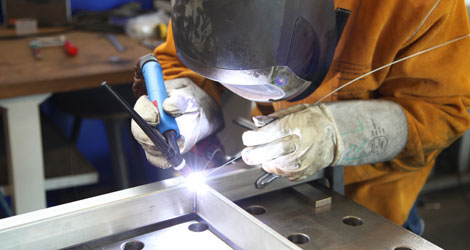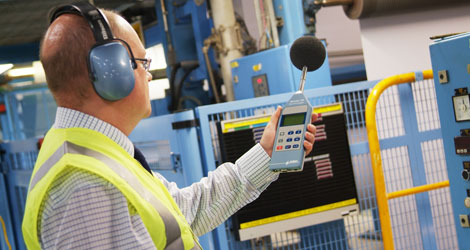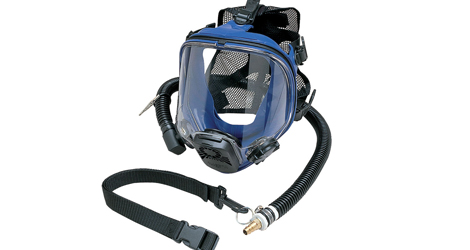
Occupational Health and Safety
Workers may be exposed to a variety of chemical, physical and biological substances. An evaluation of their working conditions will help determine the substance(s) of concern, such as the following:
Chemicals
- Solvents (toluene, xylene, benzene, MEK, etc.)
- Dusts (wood, silica, inhalable and respirable particulate)
- Metals (welding fume and grinding particulate)
- Gasses (carbon monoxide, carbon dioxide, VOCs, hydrocarbons, etc.)
- Fibers (asbestos, fibreglass, cellulose, etc.)
Biological
- Moulds (fungi), bacteria, viruses
Physical
- Noise
- Vibration
Testing can be performed to evaluate their exposure to these substances. HLC has several years of experience in performing testing in several manufacturing and construction environments.
If you have received an Improvement Order from Workplace Safety & Health Division, a worker exposure assessment may be required. HLC has the expertise in determining the airborne contaminants of concern by reviewing Safety Data Sheets (SDS) and completing the worker exposure testing in accordance to approved sampling methodologies. All sample analysis is completed by accredited laboratories.
Welding metal fume testing

Workers may be exposed to a variety of chemical and/or biological substances. Welding fume is comprised of several metals, some of which can cause serious health concerns at very low concentrations. HLC Consulting Ltd. can complete an evaluation of their working conditions will help determine the substance(s) of concern, such as air testing of welding fumes and metals, which are common industrial activities. If you have received an Improvement Order from Workplace Safety & Health Division, it may require this exposure assessment and testing.
What’s the concern with welding fumes?

The exposure to elevated levels of welding fumes have been associated with cancer, lung and central nervous system effects and reproductive effects in men. The welding fume metal of greatest concern is typically manganese (Mn). Chronic high exposure to manganese has been associated with central nervous system effects referred as manganism. This causes the worker to suffer to symptoms that are similar to Parkinson’s disease. The symptoms may include tremors, slowness of movement, muscle rigidity, and poor balance. Exposed male workers also have a higher risk of fertility problems. The effect on the central nervous system from manganese poisoning is believed to be permanent and in recent years has become the primary concern in welding exposures.
In 2013, the American Conference of Governmental Industrial Hygienist (ACGIH) lowered the Threshold Limit Value (TLV) for manganese to 0.02 mg/m3 in response to new information on neurological symptoms in welders at airborne concentrations below the old TLV of 0.2 mg/m3. As a result of the lowering of the manganese exposure limit, many welders will now be exposed to airborne concentrations of manganese exceeding the TLV.
How are the samples collected?
Welding fume personal samples are collected in the worker’s breathing zone. For welders, this is completed by placing the sample medium behind the welding mask, using in-mask sampling procedure. This procedure provides a more accurate measurement of the worker’s exposure, which has been confirmed in several studies. Area samples can also be collected with the personal samples to help determine the migration of welding fumes to non-welding areas of the facility.
To provide a complete description of the airborne metals in the worker’s breathing zone, the collected samples are analyzed for metals commonly identified in welding fumes. All samples are analyzed by an accredited laboratory. A comprehensive report is prepared detailing the laboratory results, comparison to current provincial exposure guidelines and provides recommendations for implementing strategies to reduce worker exposure.
Noise Testing

Noise induced hearing loss (NIHL) is caused be long-term exposure to excessive noise levels. Sound level assessments can evaluate worker exposure to damaging noise. This exposure data can then be used to:
- produce a “noise map” of the workplace;
- identify those areas in which the noise levels can or should be reduced;
- determine the areas in which hearing protection must be offered to the employees and those areas where hearing protection is mandatory.
In Manitoba, the department of Workplace Safety and Health has developed regulations and guidelines to prevent NIHL. Part 12 of the Manitoba Regulation 217/2006 states that an employer must conduct a noise exposure assessment if a worker is or is likely to be exposed to noise in excess of 80 decibels (dBA).

When noise exposure assessment indicates that a worker is exposed to more than 85 dBA, an employer must implement sound control measures that reduce the noise to which the worker is exposed. Hearing protection must be provided to the workers if the implementation of sound control measures are not reasonably practicable.
The provincial regulation also requires that personal noise monitoring be completed on a periodic basis. The worker is equipped with a small noise dosimeter that records the worker’s noise exposure level in dBA.
A sound level meter is also used to measure ambient noise levels produced by specific machinery, tasks, equipment, etc. These measurements indicate where the highest levels of noise are generated, and provide good starting points when considering engineering controls to lower noise levels.
Compressed Breathing Air (CBA)

This testing is completed in accordance to CSA standard Z180 and is required every 6 months. This test ensures that the air quality provided to workers wearing supplied air respirators is appropriate in accordance to the CSA standard. Compressed breathing air may be used in paint booths in autobody shops, spray booths, sand and shot blasting and other applications. Samples are analyzed by an accredited laboratory. The results are compared to CSA standard and are provided in a detailed report that is prepared by a Certified Industrial Hygienist (CIH).
Ambient outdoor samples are also collected near the fresh air intake used by the CBA system, which ensures that the outdoor concentration of carbon dioxide does not exceed the CSA allowable concentration of 600 ppm.

